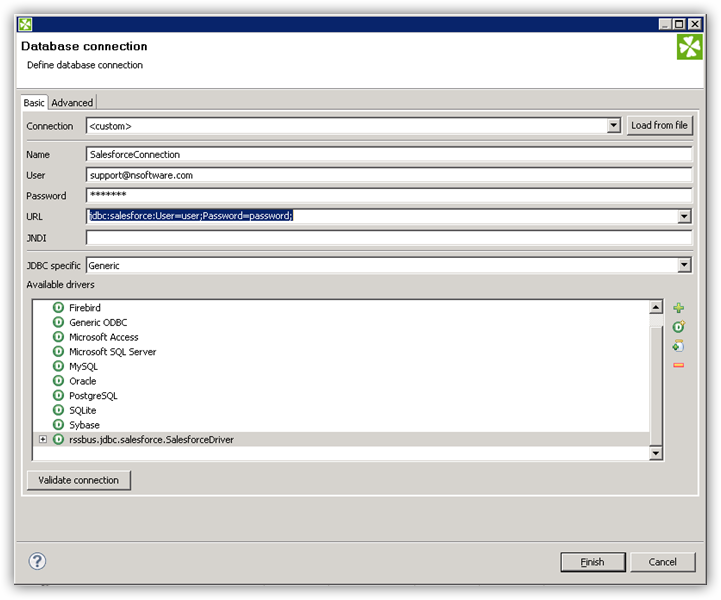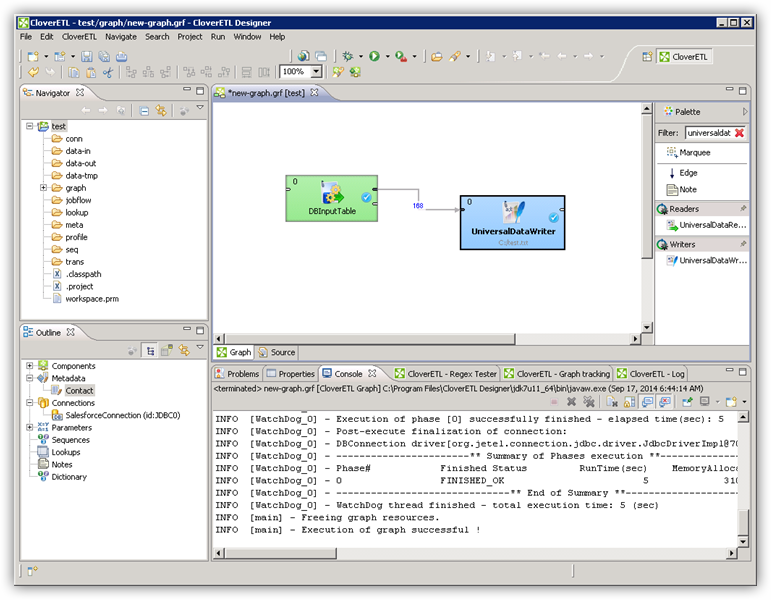Discover how a bimodal integration strategy can address the major data management challenges facing your organization today.
Get the Report →Connect to SAP SuccessFactors Data in CloverDX (formerly CloverETL)
Transfer SAP SuccessFactors data using the visual workflow in the CloverDX data integration tool.
The CData JDBC Driver for SAP SuccessFactors enables you to use the data transformation components in CloverDX (formerly CloverETL) to work with SAP SuccessFactors as sources and destinations. In this article, you will use the JDBC Driver for SAP SuccessFactors to set up a simple transfer into a flat file. The CData JDBC Driver for SAP SuccessFactors enables you to use the data transformation components in CloverDX (formerly CloverETL) to work with SAP SuccessFactors as sources and destinations. In this article, you will use the JDBC Driver for SAP SuccessFactors to set up a simple transfer into a flat file.
Connect to SAP SuccessFactors as a JDBC Data Source
- Create the connection to SAP SuccessFactors data. In a new CloverDX graph, right-click the Connections node in the Outline pane and click Connections -> Create Connection. The Database Connection wizard is displayed.
- Click the plus icon to load a driver from a JAR. Browse to the lib subfolder of the installation directory and select the cdata.jdbc.sapsuccessfactors.jar file.
- Enter the JDBC URL.
You can authenticate to SAP Success Factors using Basic authentication or OAuth with SAML assertion.
Basic Authentication
You must provide values for the following properties to successfully authenticate to SAP Success Factors. Note that the provider will reuse the session opened by SAP Success Factors using cookies. Which means that your credentials will be used only on the first request to open the session. After that, cookies returned from SAP Success Factors will be used for authentication.
- Url: set this to the URL of the server hosting Success Factors. Some of the servers are listed in the SAP support documentation (external link).
- User: set this to the username of your account.
- Password: set this to the password of your account.
- CompanyId: set this to the unique identifier of your company.
OAuth Authentication
You must provide values for the following properties, which will be used to get the access token.
- Url: set this to the URL of the server hosting Success Factors. Some of the servers are listed in the SAP support documentation (external link).
- User: set this to the username of your account.
- CompanyId: set this to the unique identifier of your company.
- OAuthClientId: set this to the API Key that was generated in API Center.
- OAuthClientSecret: the X.509 private key used to sign SAML assertion. The private key can be found in the certificate you downloaded in Registering your OAuth Client Application.
- InitiateOAuth: set this to GETANDREFRESH.
Built-in Connection String Designer
For assistance in constructing the JDBC URL, use the connection string designer built into the SAP SuccessFactors JDBC Driver. Either double-click the JAR file or execute the jar file from the command-line.
java -jar cdata.jdbc.sapsuccessfactors.jarFill in the connection properties and copy the connection string to the clipboard.
![Using the built-in connection string designer to generate a JDBC URL (Salesforce is shown.)]()
A typical JDBC URL is below:
jdbc:sapsuccessfactors:User=username;Password=password;CompanyId=CompanyId;Url=https://api4.successfactors.com;

Query SAP SuccessFactors Data with the DBInputTable Component
- Drag a DBInputTable from the Readers selection of the Palette onto the job flow and double-click it to open the configuration editor.
- In the DB connection property, select the SAP SuccessFactors JDBC data source from the drop-down menu.
- Enter the SQL query. For example:
SELECT address1, zipCode FROM ExtAddressInfo WHERE city = 'Springfield'
Write the Output of the Query to a UniversalDataWriter
- Drag a UniversalDataWriter from the Writers selection onto the jobflow.
- Double-click the UniversalDataWriter to open the configuration editor and add a file URL.
- Right-click the DBInputTable and then click Extract Metadata.
- Connect the output port of the DBInputTable to the UniversalDataWriter.
- In the resulting Select Metadata menu for the UniversalDataWriter, choose the ExtAddressInfo table. (You can also open this menu by right-clicking the input port for the UniversalDataWriter.)
- Click Run to write to the file.








